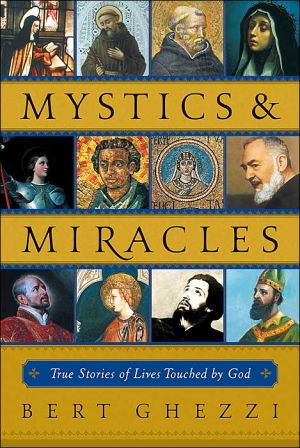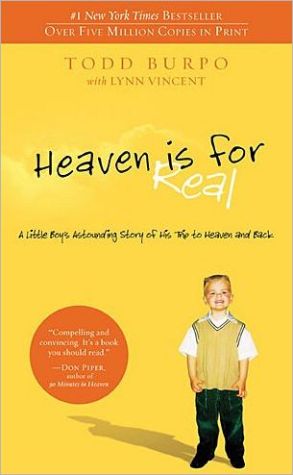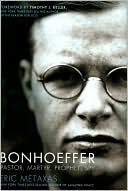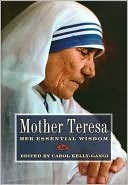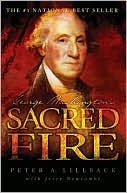Mystics and Miracles: True Stories of Lives Touched by God
Praise for Mystics & Miracles\ “These wonderful stories . . . are fascinating reading. There is much to ponder here—and much to strengthen our faith.”\ —Catholic Parent\ “Bert Ghezzi combines a wonderfully engaging style with real spiritual substance that feeds the soul.”\ —Charles J. Chaput, O.F.M. Cap., archbishop of Denver\ “Bert Ghezzi has rescued mysticism from the myth of trendy spiritualities. . . . If your prayer leaves you longing for more of God, read this book, slowly.”\ —Mike...
Search in google:
Now in paperback, twenty-four compelling biographies explore the inspiring lives of ordinary people chosen to do God's extraordinary work. Library Journal Ghezzi (Voices of the Saints) here offers simple but engagingly written accounts of the lives of 24 saints of considerable variety: St. Lutgarde of Aywieres, Padre Pio, St. John Bosco, St. Martin de Porres, St. Joan of Arc, and so on. Told in an intimate, grandfatherly manner, the profiles may not satisfy the scholar or the experienced reader, but they should suit the needs of the ordinary devout very well. Highly recommended. Copyright 2001 Cahners Business Information.
Introduction\ \ Miracles intrigue us. They burst into our humdrum routines with startling revelations of the supernatural realm. Some people dismiss them as imagined or psychosomatically induced phenomena. But most of us welcome news of visions, healings, and other divine interventions. We long for a taste of the supernatural and value new evidence that there is more to life than we can see and touch and feel. Wouldn’t each of us love to experience a miracle? A personal miracle would comfort us, demonstrating that God cares enough to touch our lives.\ Mystics are men and women who can offer us the evidence we desire. They are wonder-workers who have fulfilled Jesus’ prediction that his disciples would perform greater works than he did. Their miracles fascinate us because they are windows to the supernatural. But more than that, mystics show us what can happen when God touches human beings. Their lives paint a picture of what men and women become when God transforms them.\ We get the word mystic from a Greek root that means “mystery.” A mystic is a person who is “introduced into the mysteries.” Broadly speaking, all Christians are mystics. We believe that by faith we are initiated into the mysteries of Christ’s death and resurrection. But most Christians are not mystics in the technical sense because we have yet to penetrate the Christian mysteries in depth. That’s what sets a true mystic apart from the crowd.\ Mystics enjoy a special closeness to God. They get rid of all the clutter in their hearts to make more room for God. Often they practice severe self-discipline so they can replace their fleshly desires with longings for God alone. As a way of interceding for Christ’s intentions, Lutgarde of Aywières fasted for forty years on bread and a nonalcoholic malt beverage. Dominic imitated Christ, who had no place to lay his head, by sleeping alongside the road with a rock for his pillow. Twenty-first-century Christians are not likely to adopt such penances, but mystics believe that undertaking these severities helps them draw closer to God.\ Mystics frequently experience miraculous phenomena and exercise extraordinary powers. They seem to lapse freely into ecstasy and have been observed at prayer in suspended animation, sometimes for hours. Catherine of Siena went limp in ecstasy at will. Friends reported that they saw Lutgarde of Aywières “float” off the ground. When Anthony of Egypt prayed, he seemed to glow with preternatural radiance. Martin de Porres passed through locked doors. Visions guided Ignatius of Loyola step-by-step in founding the Jesuits. John Bosco visited people in their dreams. Padre Pio appeared in two places at the same time. The list could go on indefinitely.\ You might think that mystics are so absorbed with God that they can do nothing but worship him. The mystics of the past prayed for long stretches, but they were also activists. Saints like Catherine, Martin, and Elizabeth of Hungary exhausted themselves in service all day long. Then they prayed most of the night. So as not to disturb her sleeping husband, Elizabeth asked her maid to quietly awaken her for night vigils. During the day she tended the sick in hospitals that she had built for the poor. Solanus Casey counseled and prayed for people twelve hours a day. At night he prayed before the Blessed Sacrament, subsisting on a few hours sleep. Anthony prayed all the time, yet he was very busy. His community-building activities in the desert preserved the Christian ideal for the church of his time, and we still feel the influence of his achievements.\ \ You have probably noticed that most of the mystics I have mentioned so far are saints. All the mystics that I have included in this book are saints or are in the process of being recognized as saints by the Catholic Church. However, many holy women and men are mystics whom the church will never formally acknowledge as saints. Perhaps some have an impediment that prevents their canonization. However, I think most are pray-ers known to God alone, who shun human adulation and keep themselves obscure.\ Similarly, all saints are not mystics. All canonized saints were people of prayer who enjoyed an intimate relationship with God. But for a variety of reasons, not all ascended to mystical heights. For example, some were martyred, and others died young before they had an opportunity to advance in union with God.\ \ Over the past several years I have spent every day with the mystics. For the most part, I have enjoyed being with them. Now and then, however, their extremism has made me uncomfortable. Anthony’s penances in the desert, for instance, are alien to me. I can’t even tolerate sand between my toes when I’m sunning at the beach. The lifelong fasts of Vincent Ferrer and Francis of Paola are not for me. I am unable to go for many hours between meals without snacking. I was so distressed by the self-mutilations of Rose of Lima and Margaret of Cortona that I decided not to write about them. When Rose was praised for her lovely skin, she damaged it with lye. And out of a misguided sense of guilt over past sexual sins, Margaret carved scars into her beautiful face. In my view such actions have little to do with holiness.\ But I feel right at home when the mystics let me see their humanity.\ I won’t soon forget how Teresa of Ávila has delighted me. I will forever picture her scarfing down a partridge to the shock of a friend who thought she should be fasting. I will also think of her stifling a laugh while a priest denounced her from the pulpit. Francis of Assisi, who sometimes seems so otherworldly, has also endeared himself to me. On his deathbed he asked for marzipan, his favorite treat. He had just told one of his brothers to ask Jacoba, a longtime friend and noblewoman of Rome, to bring him some when she came to the door with a tray of the dessert. In a charming display of humanness, Francis bent the rule that forbade women to enter a friar’s room. He instructed that the woman be called “brother” so that she could approach his bed and serve him the marzipan.\ As an inveterate practical joker myself, I cherish the high jinks of John Bosco. When two friends schemed to have him confined to an insane asylum, he had them locked up instead. I love the way Elizabeth of Hungary once dealt with a fourteen-year-old boy. She confronted him about the way he dressed. Then, at his request, she prayed for him until he was overcome by God’s presence. Where can I sign my teen up for that kind of treatment?\ I have received great encouragement from St. Patrick. When he was about fifty, he once offhandedly admitted that his youthful fervor was gone and he felt spiritually tepid. My own enthusiasm seems to have lost some of its zip, so Patrick’s frankness gives me a boost.\ \ It’s no surprise that most mystics appear to ignore the marvels that swarm about them. They give God exclusive credit for miracles he accomplishes through them. Only a few mystics of the past seemed to deliberately work signs and wonders. These were the full-scale miracle workers such as Francis of Paola, Vincent Ferrer, and John Bosco.\ Some mystics even seem annoyed by their miracles. Lutgarde begged God to take back her gift of healing because long lines of petitioners kept her from prayer. Martin tried to hide his healing gifts by pretending to use compresses, herbs, and other medicines. Anthony claimed to have no miraculous powers, but when he sent people away, they always discovered that their prayers had been answered. Francis of Assisi had to be persuaded to pray for the sick because he felt unworthy of any miracle. And the feisty teetotaler Catherine of Siena was once so embarrassed by the miraculous appearance of a medicinal wine in her behalf that she told Christ to undo the wonder. “Who asked you for this miracle anyway?” she cried, with just a pinch of defiance.\ \ Why are the mystics’ lives marked by so many miracles? Why do they experience so many visions, healings, and other supernatural events? I have some thoughts on that question.\ First, mystics are lovers. They love God with their whole heart and soul, and they love people with every ounce of their being. When they put their love into action, signs and wonders flow. Out of pure affection, Theresa Margaret sympathetically kissed an ailing friend, who was instantly healed by that little gesture. Anthony of Padua lovingly breathed a prayer over a troubled young man, who was instantly relieved and transformed. Love moved Perpetua and her companions in prison to pray for Felicity, who gave safe birth to her daughter one month prematurely.\ Do I need to list more examples? I could go on for a long time. Scripture says that “God is love” and that “God has poured out his love into our hearts” (see 1 John 4:16 and Romans 5:5). I believe that love causes, or at least occasions, miracles because God is in it.\ Second, if you look at it from another angle, you could say that mystics do not work miracles at all. You could argue that not even those who produce the greatest miracles are actually wonderworkers. They just draw near and stay close to Christ, who is the real miracle worker. The mystics are intimate friends of Jesus, and their personal relationship with him is so secure that they can ask him for favors and expect to receive them. Once, for example, Catherine of Siena teased Raymond of Capua by pretending that she couldn’t obtain a healing for their friend who was deathly ill. When Raymond asked Catherine why she let the man lie dying, she said, “What? Do you think I am God that I can deliver someone from death?”\ “Don’t give me that!” said Raymond. “I know that Jesus does whatever you ask him to.” Of course, Catherine had already asked, and Jesus had already healed their friend.\ Third, God grants the mystics a foretaste of heaven and allows the supernatural realm to penetrate their earthly lives. For brief periods their humanity appears to take on divine qualities. Catherine of Siena taught that all the way to heaven is heaven because Christ said “I am the way.” Heaven has come down to earth. Supernatural reality is so present in the mystics that it cannot be contained in these mere earthen vessels. It breaks out in ecstasies and other miraculous phenomena.\ Finally, many mystics devote themselves to Christ in his greatest miracle—the cross. The mystery of Jesus’ death and resurrection consumed Francis of Assisi, Gertrude the Great, Teresa of Ávila, Padre Pio, and many others. When the mystics invoke the power of the cross, wonders occur. Clare of Assisi once walked into an infirmary, made the sign of the cross five times, and five sick sisters immediately got out of bed—healed. In the name of Christ crucified, Clare also stopped an army that was poised to attack her convent; Dominic restored to life a young man who had died in a fall from his horse; and Vincent Ferrer worked at least three thousand wonders. The mystics’ devotion to the cross of Christ overflows in miracles.\ Those are my thoughts on the subject. Let’s see what you think after you read about mystics and their miracles.\ \ Part One\ \ MIRACLES of LOVE\ \ The saints differ from us in their exuberance, the excess of our human talents. Moderation is not their secret. It is in the wildness of their dreams, the desperate vitality of their ambitions, that they stand apart from ordinary people of good will.\ Phyllis McGinley\ \ God gave us mystics to show us that ordinary people can live extraordinary lives. He never meant for us to put them on pedestals or view them as superhuman, far beyond anything we mortals could ever hope to be. Mystics are not preternaturally gifted aliens from another planet, but human beings just like us. We esteem them not because, like Superman, they have supernatural powers and can leap tall buildings in a single bound, but because they show us how to live good lives.\ When I look closely at mystics, I wonder if I grasp what it means to really imitate them. They did everything in extremes. No cost seemed too high. Me, I’m much more balanced. I count the cost all right, but I often find the price is steeper than I’m willing to pay.\ St. Theresa Margaret was ill herself but put aside her own suffering to care for the sick sisters in her convent. I’m not that way. If I get sick, I hop into bed and expect someone to wait on me.\ Solanus Casey humbly accepted decisions of his superiors that severely restricted his life and ministry. For half a century he labored without complaint. I’m not like him. Even little inconveniences chafe me. I fight back, big time—just ask the clerks in our local stores. What can I say about St. Elizabeth of Hungary, who though a queen spent herself and her fortunes serving Christ in the poor? Or St. Martin de Porres? For fifty years he lived every moment of each day for God and for others.\ When I stand myself beside these giants, I feel puny.\ Comedian Stephen Wright says he once went to a convenience store that bragged it was open twenty-four hours, only to find it closed. Later, the proprietor explained that his store was open twenty- four hours, just not twenty-four hours in a row! That’s how I am in my imitation of the saints. I’m inconsistent. I try to be like the saints. But only in some ways. And not all of the time.\ However, I keep looking at them. I try to stay close to them. I think that if I draw nearer to them, they might infect me with their virtue.\ Healing Touch\ St. Martin de Porres (1579–1639)\ \ Virtue is our Everest, and those who climb highest are most worth admiring.\ Phyllis McGinley\ \ Martin de Porres was a forerunner of modern social activists. Consider the remarkable record of his achievements at Holy Rosary Monastery in Lima, Peru, most of which he completed in addition to his routine tasks. Just reviewing his generosity may make us hyperventilate with exhaustion.\ Martin single-handedly transformed his monastery into a service center, distributing food and clothing daily to hundreds of people. He also made it a prototype of a modern clinic by inviting the sick to come there to have their diseases cured. And they came in droves. Martin raised vast sums of money that he gave to the poor. Once, he provided dowries for twenty-seven impoverished girls, who would have been unable to marry otherwise. He loved the homeless children of Lima, and for these waifs he planned, funded, and built an orphanage and a school. He arranged for the best possible staff, sparing nothing to hire the most qualified caregivers and teachers.\ He accomplished all of this out of his own extreme poverty. He possessed only one shabby tunic, yet he supplied comfort and help for thousands over a period of nearly fifty years. That’s the real miracle in his life.\ \ Martin was born in Lima, Peru, on December 9, 1579. Less than fifty years before, Francisco Pizarro and his conquistadors had seized the vast Peruvian empire of the Incas. In their rapacious pursuit of gold and power, the Spaniards cruelly destroyed the lives of the native people. Martin himself was a child of the conquest: he was the natural son of John de Porres, a conquistador, and Anna Velázquez, a free black woman. During Martin’s lifetime, Peru was just beginning to recover from the Spanish invasions.\ When Martin was twelve years old, his mother apprenticed him to a barber-surgeon, who trained him in the medical practices of the day. The youth became a medical expert, mastering the healing skills he would use to serve others for the rest of his life. At that time, Martin also apprenticed himself to Christ. The youthful disciple spent long periods in prayer every night. Often he was so rapt in contemplation that he seemed to lose contact with the world around him.\ Martin used herbal medicines, poultices, and other natural remedies to heal the sick, but eventually he discovered that he possessed supernatural gifts of knowledge and healing. Sometimes miracles happened directly through Martin’s prayer or touch. However, he worried that his supernatural gifts might draw undue attention to him and cause him to become proud, so he always tried to hide them by pretending to use some herb or other medicine.\ Once, Martin visited a woman whom doctors had diagnosed with a life-threatening hemorrhage. The poor lady was so upset with anxiety that Martin had to assure her repeatedly that she would not bleed to death. When he prayed for her, the Lord revealed to him that she would recover. Then, in a feeble effort to conceal his miraculous powers, he gave the sick woman an apple and told her to eat it. As he predicted, in a few days she had returned to perfect health.\ In 1594, at age fifteen, Martin became a lay helper of the Friars Preachers at the monastery of the Holy Rosary in Lima. Nine years later Martin entered the Dominican order by professing the vows of a religious brother.\ \ Martin possessed such astonishing healing gifts that I must resist the temptation to recount the story of his life in great detail. But two miracles in particular reveal something of his remarkable character and gifts.\ Little did Francis Velasco suspect how difficult it would be to leave the monastery of the Holy Rosary once he had entered it as a novice. Barely a month had passed when his father arrived to woo him away with the promise of riches and power. The senior Velasco had risen to a high rank in the Spanish government. In fact, the Spanish king had authorized him to pass on his former post as secretary of the treasury to his son, Francis. The young man found this offer too alluring to resist. Afraid to face his superiors, Francis decided instead to steal away with his father at midnight. But just as he was about to slip away, a surprise visitor startled him. It seems that Martin de Porres had been praying when suddenly he sensed the need to find Francis and comfort him.\ Never one to mince words, Martin accosted the young man. “Are you going to abandon the house of God for the office of the secretary of the treasury? It is better to serve God than to live in your father’s house. Believe me, what you were unwilling to do out of love for God, you will do out of fear of God.”\ Martin’s strange knowledge must have frightened the youth, for he decided to remain in the monastery that night. A few hours later, Francis came down with a high fever. Once he had recovered, neither the midnight warning nor the illness was enough to convince him of his calling. He tried two more times to depart, each time becoming seriously ill.\ The third and final time, Francis’s illness was so severe that a physician by the name of Dr. Cisneto declared him a hopeless case. The doctor ordered him confined to his bed, where his fever soared and his pleural cavities swelled with fluid. There seemed little hope of his recovery.\ Then, one night, despite locked doors to both the building and the room, Martin de Porres stood beside the sick man’s bed. In his hands he held an old brass brazier filled with glowing coals, a branch of rosemary, and a clean tunic. Martin dropped the rosemary on the coals, and the room filled with a blue, aromatic smoke. Then he helped Francis to his feet and wrapped him in a blanket.\ Martin proceeded to turn the mattress, change the sheets, and sponge Francis’s fevered body, finally covering it with the fresh tunic. Thus tenderly cared for, the youth stared at Martin and asked whether he would die.\ “Do you want to die?” Martin asked.\ “No,” he said.\ “Then you will not die.”\ “But how did you enter the room when both doors were locked?”\ “My boy,” said Martin, “who told you to meddle in such things?” Then he departed as swiftly and mysteriously as he had arrived. Francis slept soundly. When he awakened in the morning, all of his symptoms were gone. Dr. Cisneto, in his amazement, proclaimed it a miracle. Because of Martin’s patient intervention, Francis Velasco continued in his vocation as a Dominican.\ Martin made many such unexplained night visits to the sick, according to the testimony of his brothers at the monastery. He always seemed to appear on the other side of locked doors with an armload of healing paraphernalia.\ \ On another occasion, Felician de Vega fell deathly ill while traveling through Lima, en route to take up his office as archbishop of Mexico. He suffered from a fever and a severe, persistent pain on the side of his chest. All the doctors’ remedies had failed to cure him. De Vega had heard about Martin’s healing gifts, for despite all the pretenses Martin had used to disguise them, he had become famous. Desperate for relief, the archbishop demanded that Martin come immediately to his bedside.\ Martin’s superior ordered him to go in haste, so he had no time to gather his medicines. He worried that he had no decoys to distract attention from his miraculous powers, but he had no choice. He had to obey. As soon as Martin arrived, the archbishop commanded him to stretch out his hand.\ “But what would a prelate like Your Excellency want with the hand of a poor black man?” asked Martin. He knew what was coming.\ “Didn’t the father provincial tell you to do whatever I said?” “Yes, my lord.”\ “Then put your hand here.”\ Marvelously, when Martin gently touched the archbishop’s side, the pain evaporated. Martin tried to pull back his hand. “Isn’t that enough, my lord?”\ “Leave it where it is,” commanded the archbishop, and he pressed Martin’s hand more tightly against his body. As he did, the fever and all discomfort vanished. Now altogether cured during this brief visit, de Vega unceremoniously sent Martin back to the monastery.\ Embarrassed that he had been compelled to display his gift, Martin returned to Holy Rosary determined to quell any temptation to pride. He grabbed a broom and began to sweep randomly and then found some toilets to clean.\ “Brother Martin,” asked one of the priests, “wouldn’t you be better off in the palace of the archbishop of Mexico?”\ Paraphrasing Psalm 84, Martin replied, “‘I have chosen to be a slave in the house of my God.’ Father, I think one moment spent in doing what I am doing right now is more important than many days spent in the house of the Lord Archbishop.”\ \ Martin did not spend much time thinking about miracles. They were God’s business, not his. He spent his daylight hours indefatigably caring for others, especially Lima’s poor. He devoted his nights to prayer and penance. He slept only sporadically and as little as possible, usually on a hard bench in a room near the infirmary.\ Martin knew 1 Corinthians 13 by heart: “If I have a faith that can move mountains, but have not love, I am nothing. . . . [Love] always protects, always trusts, always hopes, always perseveres.” The profound charity described in that text shaped his life: he strove to make everyone around him comfortable but ignored his own discomfort. He fed the hungry poor, nourishing their bodies with food and their souls with good counsel.\ Martin regularly brought Lima’s sick and infirm into the monastery to care for them, often in his own room. When some brothers complained, he found places for the sick at his sister’s home nearby. He was frequently ill himself with malarial fever, but he paid no attention to it.\ As the one in charge of the monastery’s wardrobe, Martin kept his brothers properly dressed but also generously clothed the poor. The hungry always knew that Martin would feed them. At suppertime he would scavenge in the dining hall for food to serve the blacks, Indians, and Spaniards who crowded outside the door. Often he gave away his own meals. At times when food was in short supply, it seemed to multiply as Martin dispensed it.\ The thought of Martin de Porres makes me confront my own self-indulgence. My personal concerns seem to gobble up most of my money. Oh, I have had flashes of generosity in which I have mailed a check to a philanthropic organization. Rarely have I reached out personally to the poor. Now, I don’t live lavishly, I tell myself, but I do see to it that I am well-fed and comfortable. Perhaps imitating Martin de Porres, even in some small way, will chip away at my selfishness. It may take a miracle to move that mountain. But I will try.\ \ Love’s Charter\ If I speak in the tongues of men and of angels, but have not love, I am only a resounding gong or a clanging cymbal. If I have the gift of prophecy and can fathom all mysteries and all knowledge, and if I have a faith that can move mountains, but have not love, I am nothing. If I give all I possess to the poor and surrender my body to the flames, but have not love, I gain nothing.\ Love is patient, love is kind. It does not envy, it does not boast, it is not proud. It is not rude, it is not self-seeking, it is not easily angered, it keeps no record of wrongs. Love does not delight in evil but rejoices with the truth. It always protects, always trusts, always hopes, always perseveres.\ 1 Corinthians 13:1–7
AcknowledgmentsIntroductionPt. 1Miracles of Love3Healing Touch - St. Martin de Porres (1579-1639)5Little Miracles of Affection - St. Theresa Margaret (1747-70)11Royal Miracles - St. Elizabeth of Hungary (1207-31)14Miracles from Failures - Venerable Solanus Casey (1870-1957)20Pt. 2Miraculous Prayer29Miracles That Made Peace - St. Catherine of Siena (1347-80)31The "Accidental" Mystic - St. Lutgarde of Aywieres (1182-1246)39Miracles in the Desert - St. Anthony of Egypt (c. 251-356)44Miracles to the Rescue - St. Clare of Assisi (c. 1193-1253)50Pt. 3Dreams, Visions, and Other Wonders57Visions - St. Perpetua (c. 181-203)59Miracles of the Heart - St. Gertrude the Great (1256-1302)67Wounded Healer - Blessed Padre Pio of Pietrelcina (1887-1968)73Pt. 4Miracles of Conversion85Miracles in Action - St. Dominic (1170-1221)87Miracles in Death - St. Sabas and St. Apphian (Fourth Century)95Miracles in His Mouth - St. Anthony of Padua (1195-1231)100The Miracle Is the Message - St. Vincent Ferrer (c. 1350-1419)108Pt. 5Miracles to Awaken Us115Miracles for the Poor - St. Francis of Assisi (1181-1226)117A Miracle in Her Soul - St. Teresa of Avila (1515-85)124Raising the Dead and Other Miracles - St. Francis of Paola (1416-1507)131An Astonishing Invasion of the Supernatural - St. John Bosco (1815-88)138Pt. 6Miracles that Changed the Course of History147Miraculous Voices - St. Joan of Arc (1412-31)149Miracles over Magic - St. Patrick (c. 389-c. 461)155Miracles of Discernment and Obedience - St. Ignatius of Loyola (1491-1556)161A Miracle Within - St. Francis Xavier (1506-52)170Afterword175Saints and Their Feast Days179Bibliography181Glossary185
\ Library JournalGhezzi (Voices of the Saints) here offers simple but engagingly written accounts of the lives of 24 saints of considerable variety: St. Lutgarde of Aywieres, Padre Pio, St. John Bosco, St. Martin de Porres, St. Joan of Arc, and so on. Told in an intimate, grandfatherly manner, the profiles may not satisfy the scholar or the experienced reader, but they should suit the needs of the ordinary devout very well. Highly recommended. Copyright 2001 Cahners Business Information.\ \
